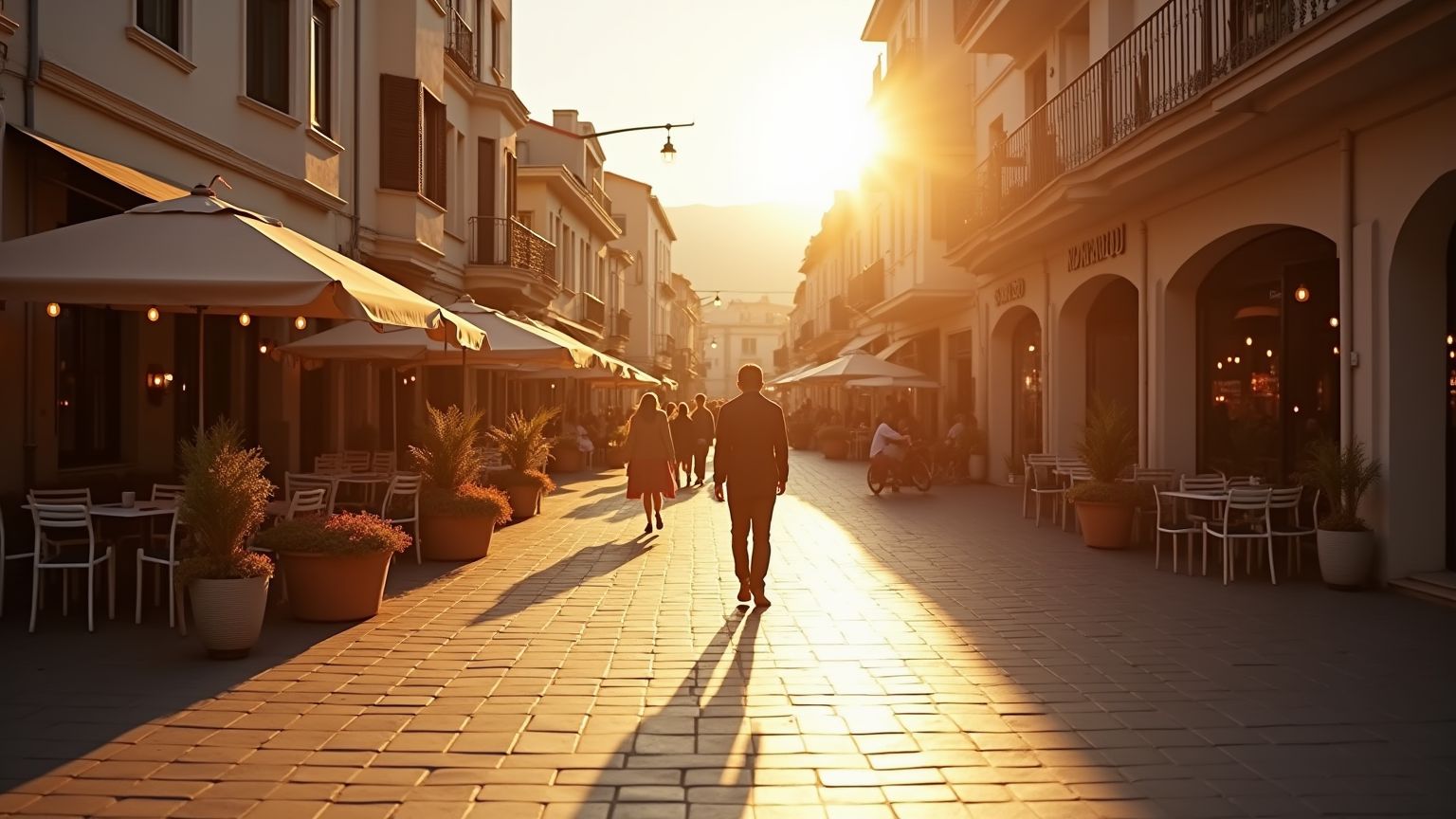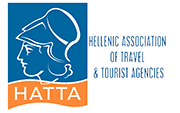A Local’s Guide to Kalamata: The Jewel of the Peloponnese
I've spent the last 15 years guiding folks through Kalamata and the Messinian countryside, watching my once-quiet seaside town bloom into one of Greece's most magnetic destinations. But here's the kicker – despite the growing crowds, Kalamata still feels like Kalamata, if you know what I mean.
There's something in the air here that refuses to change – maybe it's the way the sun hits the mountains behind town, or how the olive groves ripple in the breeze like a green ocean.
This isn't just another travel guide. It's my love letter to Kalamata, packed with the secrets and shortcuts only us locals know. I'm talking about those hidden tavernas where the menu doesn't exist because yiayia decides what's cooking each morning, and beaches so tucked away you might think you're the first person to discover them.
Getting to Kalamata

By Air
Remember when our airport was practically a sleepy shed with a runway? Those days are long gone! Kalamata International Airport (KLX) now buzzes with direct flights from all over Europe between April and October. Airlines including Aegean, British Airways, easyJet, and Lufthansa have transformed what was once a pilgrimage into a painless hop.
Winter travelers, brace yourselves – you'll likely connect through Athens. These puddle-jumper flights take just 45 minutes but run about as regularly as rainfall in the Messinian summer (which is to say, not very). Double-check those schedules before committing.
Insider whisper: That taxi queue at peak season makes Greek bureaucracy look efficient. Book your transfer ahead unless standing in the Mediterranean heat with your luggage sounds like vacation goals.
By Road
Already wandering around Greece? The drive to Kalamata delivers views worthy of the gods themselves:
• The speedster route via Corinth and Tripoli (2.5-3 hours from Athens) – Smooth sailing on modern highways that would impress even the ancient road-builders.
• The scenic meander along the Saronic Gulf through Epidaurus and Nafplio (3.5-4 hours) – Longer? Yes. Worth every extra minute? Absolutely. The road hugs the coastline like a lover, with historical sites that'll have you pulling over every twenty minutes.
Local knowledge: Our mountain passes don't mess around in winter. Between December and February, check if Zeus is having a tantrum before setting out – fog thicker than yogurt and occasional snow can make those winding roads tricky.
By Bus
KTEL buses link Athens to Kalamata several times daily like a reliable old friend. For around €25 one-way, you'll get comfortable seats and a 3-hour journey that lets you actually enjoy the landscape instead of cursing at Google Maps.
Straight talk: Summer weekends see buses packed tighter than olives in a jar. Book a day ahead or risk standing all the way from Kifissos Terminal.
When to Visit Kalamata
Kalamata isn't just a one-season wonder – she shows different faces throughout the year:
Spring (April-May)
If I could bottle up Kalamata's springtime and sell it, I'd be writing this from my yacht. The hillsides erupt in wildflowers, temperatures hover in that perfect 18-25°C sweet spot, and you'll have ancient ruins practically to yourself. The hiking trails around Taygetos mountains call like sirens, without summer's punishing heat.
Summer (June-September)
The classic season brings solar-powered days (often hitting 30-35°C), beaches dotted with colorful umbrellas, and nights alive with music drifting between outdoor tables. July's Kalamata International Dance Festival fills our historic venues with movement and energy like nowhere else in Greece.
August in Kalamata? Imagine the busiest Athens street, but with beach towels and souvlaki. Prices surge along with the crowds. My advice? Venture beyond the obvious spots to find pockets of tranquility that still exist if you know where to look.
Autumn (October-November)
Ah, my second-favorite season in Kalamata! October still invites you to swim while the countryside buzzes with olive and grape harvests. There's something magical about watching nets spread under ancient olive trees as farmers harvest the city's namesake fruit. Play your cards right, and you might find yourself invited to a village harvest celebration – these aren't staged for tourists; they're the real deal.
Winter (December-March)
Kalamata pulls on her authentic clothes when the tourists leave. With mild temperatures of 10-15°C and occasional rain showers washing the streets clean, winter reveals the city's soul. Olive mills operate at full tilt through January, filling the air with that grassy, peppery scent of fresh-pressed oil that no perfumer could ever capture.
Truth bomb: Plan your visit between November and January if you want to witness liquid gold being born. Standing in an olive mill as centuries-old stone presses do their work is a sensory overload you won't forget – especially that distinctive, throat-catching aroma of just-pressed olive oil.
Where to Stay in Kalamata
Beachfront (Navarinou)
Kalamata's coastline offers everything from luxury digs to simple family-run spots:
• Pharae Palace – A polished 4-star option where the breakfast view might ruin all future breakfasts for you
• Elite City Resort – Where families return year after year for reliable comfort and kid-friendly facilities
• Local apartments – Often half the price of hotels with twice the charm and actual kitchens (for when you inevitably become obsessed with cooking using local ingredients)
Historic Center
For those who prefer church bells to wave sounds:
• Hotel Fotini – Housed in a building with more stories than your chatty taxi driver
• Horizon Blu – Modern luxury that somehow doesn't feel out of place among centuries-old structures
• Traditional guesthouses – Where breakfast might include homemade preserves from the owner's garden and advice about which restaurant serves the best moussaka (worth their weight in gold)
Surrounding Villages
Sometimes the best way to experience Kalamata is to stay just outside it. Consider Kardamyli, Stoupa, or Petalidi for a more intimate experience.
Hard-earned wisdom: July and August bookings need to happen months in advance. That dreamy waterfront room won't wait for last-minute planners.
Getting Around Kalamata and Messinia
Within Kalamata
My hometown sprawls less than you'd think. Most attractions sit within a 30-minute stroll of each other, with the 1.5km between the beach and historic center offering plenty of café stops along the way. Local buses (€1.60 per ride) connect key spots for when your feet revolt.
Taxis in Kalamata won't bankrupt you – most city trips cost €5-7. Find them at stands or master the slight hand-raise that locals use to hail them on the street.
Exploring the Region
Rent a car. Just do it. While you technically can use buses to visit surrounding villages, you'll spend more time waiting at bus stops than actually exploring. Major agencies have counters at both the airport and in town.
Hard truth: Summer rental cars disappear faster than ice cream in August. That "I'll just rent when I get there" plan? It's left many visitors stranded in Kalamata while the region's treasures remained just out of reach.
For the driving-averse, I offer guided tours that not only solve the transportation puzzle but also connect the historical dots that guidebooks often miss.
Must-See Attractions in Kalamata
Historical Sites
The Old Town (Historic Center)
Kalamata's soul resides in its old town, where each stone seems to whisper stories:
• The 13th-century Frankish Castle – Climb up for views that explain why humans have fought over this land for millennia
• The Church of the Holy Apostles – Where modern Greece was essentially born in 1821 as revolutionaries declared independence from Ottoman rule
• Ypapanti Cathedral – Imposing on the outside, unexpectedly intimate within
Kalamata Municipal Railway Park
A quirky open-air museum where decommissioned trains have found their forever home. It's both a photographer's playground and a place where train-obsessed kids (and adults) can live their best lives.
Museums
The Archaeological Museum of Messinia
Housing everything from prehistoric tools to Byzantine treasures. The Ancient Messene exhibits will make you wonder why this site doesn't get the same attention as Olympia.
The Historical and Folklore Museum
Housed in a building so pretty you'll want to photograph it from every angle, this collection brings everyday Messinian life through the centuries into vivid focus.
The Military Museum
A respectful display of Greece's modern military struggles that gives context to the fierce independence you'll sense throughout the region.
Natural Attractions
Kalamata Beach
Four kilometers of coastline where you can choose your own adventure – from loungers-and-cocktails sections to quieter stretches where you'll share the shore with only local families.
Almyros Wetland
Just a short hop from downtown Kalamata lies this pocket-sized ecosystem where bird calls replace car horns. Bring binoculars and patience.
Taygetos Mountain
That dramatic wall of mountain behind Kalamata isn't just scenery – it's your playground. Trails range from gentle woodland walks to challenging ascents that will have your legs protesting for days afterward.
Day Trips from Kalamata
One of Kalamata's secret weapons is its strategic location. Within an hour or so, you can access experiences diverse enough to feel like you've visited multiple regions:
Ancient Messene (30 minutes drive)
Imagine Olympia or Delphi, but with a fraction of the visitors. This vast archaeological site boasts one of the best-preserved ancient stadiums in existence, plus a theater, temples, and fortifications that make most other ruins seem underwhelming.
From experience: Morning visits not only avoid the heat but catch the ruins in golden light that photographers dream about.
The Mani Peninsula (1 hour drive)
The Mani isn't just another pretty coastline – it's Greece at its most unapologetically rugged. Stone tower houses rise from rocky landscapes like they grew there naturally. Kardamyli village looks like it was designed for postcards, while abandoned Vathia tells silent stories of a harder past.
Pylos and Navarino Bay (1 hour drive)
This charming coastal town punches well above its weight historically. The natural harbor witnessed one of history's pivotal naval battles, while Neokastro fortress stands guard like a sentinel frozen in time. The town square serves the kind of unhurried coffee experience that reminds you why you came to Greece in the first place.
Mystras (1 hour drive)
A Byzantine ghost city that climbs the hillside like a medieval dream. The remarkably preserved frescoes in its churches deliver an emotional punch that goes beyond typical sightseeing. When afternoon light hits the stone buildings, you'll understand why photographers and historians alike count Mystras among Greece's most atmospheric sites.
Polylimnio Waterfalls (40 minutes drive)
A series of emerald pools connected by waterfalls, hidden in a gorge that feels worlds away from coastal Kalamata. The hike's moderate challenge keeps the crowds manageable, and that first plunge into the refreshing water might be the highlight of your summer.
Kalamata's Culinary Delights
In Kalamata, food isn't fuel – it's philosophy, family, and festivity rolled into one:
Local Specialties
• Kalamata olives – Yes, they're famous worldwide, but tasting them in their homeland reveals nuances that never make it into exported jars
• Lalagia – Ring-shaped fried dough that's simultaneously crispy and chewy, served with honey or cheese that's sharp enough to cut through the richness
• Diples – Paper-thin pastry folded like fabric, then drizzled with honey and crushed walnuts. They shatter delicately between your teeth before melting away
• Sfela cheese – A local sheep's milk creation with a kick that sneaks up on you. Watch locals slice it, grill it briefly, then squeeze lemon over the top
• Pasteli – Ancient energy bars that fueled Olympic athletes, made simply with sesame seeds and honey
• Lagotoumba – A dessert so local even many Greeks haven't heard of it. Picture layers of crisp filo embracing a mixture of nuts, cinnamon, and honey
Where to Eat
Traditional Tavernas
• Kardamo – Where traditional recipes get respectful modern updates in the atmospheric old town
• To Limeni – Seafood so fresh it practically introduces itself by name
• Ελιά και Λάδι – The place where locals take visiting relatives for dishes that taste like yiayia's cooking
Modern Greek Cuisine
• Elia – Traditional flavors reimagined with presentations that wouldn't look out of place in Athens' finest establishments
• Teloneio – Waterfront dining where the sea bass likely swam past your table earlier that day
Local Institutions
• Pantazis – A patisserie operating since 1915 where the recipes remain stubbornly unchanged (for good reason)
• Central Market – The beating heart of Kalamata's food scene, where producers and consumers engage in the ancient dance of commerce and conversation
Real talk: Restaurants fill up after 8 PM with local families. Earlier than that, you're dining in a parallel tourist universe that doesn't quite capture the authentic rhythm of Kalamata evenings.
Beaches Around Kalamata
While Kalamata's main beach serves its purpose, the surrounding coastline hides gems worth the short drive:
Mikri Mantinia (15 minutes drive)
A compact pebbly cove where the water clarity makes snorkeling irresistible. Several family-run tavernas serve the day's catch with minimal fuss and maximal flavor.
Santova (10 minutes drive)
A local favorite where Kalamata families escape the tourist-heavy main beach. The wide sandy shore gradually shelves into the sea, making it ideal for children or hesitant swimmers.
Petalidi (25 minutes drive)
More than just a beach, this is a proper seaside village where fishermen still mend nets beside visitors' towels. The waterfront tavernas epitomize the concept of "from boat to plate."
Voidokilia (1 hour drive)
A perfect omega-shaped bay that looks Photoshopped even in person. Fine sand, turquoise water, and a backdrop of natural conservation area rather than concrete hotels. Worth every minute of the drive.
Shopping in Kalamata
Food Products
The Central Market doesn't just sell groceries – it sells stories, traditions, and flavors that define Kalamata:
• Extra virgin olive oil that makes supermarket versions taste like sad imposters
• Vacuum-packed olives that somehow maintain their buttery texture
• Mountain honey so dense you can almost chew it, infused with thyme, pine, or wildflowers
• Preserved fruits swimming in syrup – try the baby watermelon or unripe walnut for something you can't find elsewhere
Local Crafts
• Along Aristomenous Street, look for shops selling handwoven textiles made using techniques unchanged for generations
• Ceramic reproductions of ancient Messinian designs make meaningful souvenirs that connect past to present
• Local artisans create jewelry incorporating olive leaves, Byzantine motifs, and Messinian symbols
Market Days
Wednesday and Saturday mornings transform the area near the castle into a bustling marketplace. Unlike the sanitized "traditional markets" in more touristy areas, this is where Kalamata residents actually shop. Listen for the vendors' musical sales pitches and don't be shy about asking for a taste before buying.
Festivals and Events
Time your visit right, and you might catch Kalamata at her most vibrant:
• Kalamata International Dance Festival (July) – World-class performances that use historic venues as dramatic backdrops
• International Documentary Festival (January) – Thought-provoking films that provide windows into other worlds during the quieter winter season
• Carnival Celebrations (February/March) – When even the most serious Kalamata residents don costumes and surrender to joyful absurdity
• Olive Harvest Festivals (November) – Various villages celebrate the new harvest with music, dance, and enough food to make movement afterward challenging
Practical Information
Money Matters
ATMs sprinkle Kalamata like confetti, and credit cards are widely accepted in established businesses. That said, the further you venture into village tavernas or roadside stands, the more essential cash becomes. Some of life's most delicious experiences in Kalamata happen in places without card machines.
Language
While tourist








